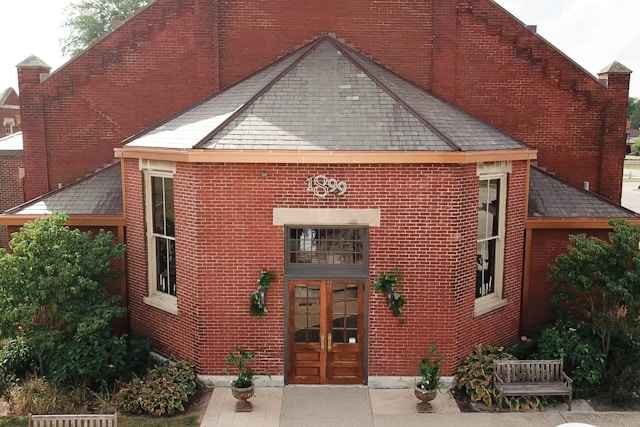Wood is among the oldest building materials in the world, being used by people to build and decorate their houses for thousands of years, and continues to be one of the most popular and widespread choices in construction and interior design. Therefore, if you’re planning on modernising your interiors or decorating them from scratch, wood will surely show up on your radar when browsing through the options.
However, before you start thinking about adding wooden features to your home or buying wood furniture to spruce up your rooms, you should take the time to educate yourself on the topic and learn about the advantages and disadvantages of using wood in home design.
Benefits
There are many advantages to using wood when designing or renovating your home. The biggest selling point is its functionality. Wood is a very strong and hard-wearing material, which makes it ideal for all kinds of applications, particularly for objects and surfaces that are subjected to a lot of wear and tear, such as floors, countertops, or different furniture pieces that are used on a daily basis.
So, if you want to surround yourself with items and features that will last a lifetime and be passed down from one generation to the other, wood is definitely a great option. Obviously, wood durability varies by type, and the sturdiness of wood objects depends on aspects such as manufacturing, usage, and environment. For example, oak is one of the strongest types of wood; therefore, the longevity of oak pieces is remarkable, especially if they’re treated with quality oak wood varnish or sealants.
While wood requires proper upkeep, it doesn’t imply nearly as much maintenance as other materials that retain dust, dirt, and moisture easily or are extremely delicate and fragile. This makes it perfect for those who want to keep their homes low-maintenance. What’s more, pieces made out of wood can also be remodelled, reconditioned, or repurposed if they get damaged or you’ve grown tired of them in their initial form.
Versatility is another standout feature to keep in mind. You’ll find there’s an endless selection of items made out of wood that you can incorporate into your home, from chairs and tables to floors and decorations. Wood lends itself to any decorative style and design, and you can even create custom wooden objects that match your interiors perfectly.
Functionality aside, wood furnishings and features are also extremely stylish and can enhance the overall look and feel of your space. When chosen carefully, wooden elements have the ability to add visual appeal and warmth, creating a homey vibe and a welcoming atmosphere.
Given its endurance, timeliness, and aesthetic appeal, wood is a material that many homebuyers appreciate, so if you’re thinking of selling your home at one point in the future, integrating wood into your interior design can be a smart move that might boost the value of your property.
Last but not least, wood procured from sustainable sources, such as responsibly managed forests or reclaimed wood, is a much more environmentally friendly choice than other materials used in home design. So, by bringing sustainably sourced wood into your home, you can minimise your impact on the environment.
Drawbacks
Unfortunately, there’s no such thing as a perfect material, so despite all the advantages it offers, wood, like all other construction materials, comes with some cons. One of the main challenges when using wood is its susceptibility to pests. Wooden objects can be severely damaged by termites, carpenter ants, and wood-boring beetles. If left unaddressed, infestation can lead to significant and costly repairs or even completely destroy the affected items.
Don’t forget that wood is also a porous material, which makes it vulnerable to moisture, so you have to make sure wooden surfaces in your home don’t come into direct contact with water or are used in spaces with high humidity levels. Otherwise, you’ll be dealing with issues such as rotting and mould growth. This is a common concern when using wood in kitchens or bathrooms.
Fortunately, treating your wood with adequate sealants and products from reputable suppliers such as https://rubiomonocoat.co.uk/ can help you protect these surfaces and avoid these types of problems. All these potential issues underscore the necessity of caring for your wood pieces properly if you want to keep them fully functional and looking great for years
Costs might also be regarded as a drawback since high-quality wood can be quite pricey. Nevertheless, the perks it provides fully justify the price tag. Even if you might have to spend a little more to decorate your home with fine wooden pieces, it’s unlikely you’re going to regret the choice.
Tips and recommendations
Since wood is such a versatile and inspiring option, let’s look at some ways you can embed it into your home’s design. Moderation is key, so try to balance wood with contrasting elements. Pair warm-toned woods with cool materials like metal, stone, or neutral-coloured textiles to avoid an overly rustic or heavy look. Lighter woods like oak or ash work beautifully with minimalist or Scandinavian styles, while darker woods such as walnut or mahogany add elegance and depth.
You can also mix different wood tones for a layered effect. Aim for complementary undertones — for example, pairing a warm walnut with a mid-tone oak — and use a consistent undertone across the different types. Anchor the room with one dominant wood and use others as accents.
Creating focal points with wood pieces is a nice touch that you might want to try. A statement wood element — like a feature wall, a custom dining table, or ceiling beams — can ground a space and act as the main attraction. Don’t feel like wood has to be everywhere; a single, bold wood feature often has more impact than using it uniformly.
Wood is always a good idea, no matter the look you want to achieve for your home. So don’t shy away from experimenting and enjoy the process.







